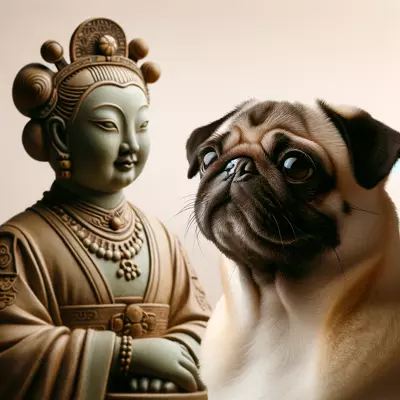Rare Pug Colors: Health Facts, Buyer Tips, and What to Expect

Disclosure: This post contains affiliate links. As an Amazon Associate, I earn from qualifying purchases—at no extra cost to you.
Pugs are best known for their fawn and black coats, but there’s a whole world of lesser-known colors that have become more popular in recent years. Shades like silver, chocolate, merle, and even blue have caught the attention of breeders and dog lovers alike.
While these rare pug colors are undeniably striking, there’s more to them than meets the eye. Health considerations, cost differences, and breeding ethics all come into play. Here’s what pug owners and future buyers should know before falling in love with a unique coat.
What Makes a Pug Color “Rare”?
According to the American Kennel Club, only fawn and black are officially recognized pug colors. These are the standard shades most people are familiar with—and the ones you’ll see in dog shows.
Rare colors like white, brindle, platinum, apricot, chocolate, silver, merle, and blue aren’t officially recognized. These variations often result from selective breeding, and in some cases, crossbreeding to introduce new coat genetics.
Many pug fans are drawn to these colors because they look different from what’s typically seen. That sense of uniqueness is part of the appeal—but coat color alone shouldn’t be the only deciding factor when choosing a pug.
Rare Colors Can Come With Health Concerns
Not all rare-colored pugs have health issues, but certain genes—especially those responsible for coat dilution—can be linked to problems. Blue and merle pugs, in particular, may have a higher risk of skin sensitivities, hearing issues, or eye defects.
Veterinary sources and experienced breeders caution against merle-to-merle pairings, which can produce puppies with more serious genetic conditions. That’s why many responsible breeders avoid these combinations altogether.
Plenty of pug owners have reported healthy experiences with their rare-colored dogs. Still, it’s important to ask questions and choose a breeder who tests for known health concerns, regardless of color.
Personality Stays the Same, No Matter the Shade
Despite some curiosity around temperament differences, there’s no evidence that coat color affects behavior. A white, brindle, or chocolate pug will still have the same core personality traits: affectionate, stubborn, playful, and deeply people-oriented.
Some owners of rare-colored pugs do say their dogs attract more attention in public. That added social exposure can lead to excitement or even nervousness if the dog isn’t used to crowds. Like all pugs, rare-colored ones benefit from consistent training and gentle socialization.
Rarity Can Mean Higher Prices and Less Ethical Breeding
Because these colors are uncommon, breeders often charge a premium. A chocolate or platinum pug may cost significantly more than a fawn or black one—sometimes twice as much or more.
Unfortunately, the increased demand for rare colors has led to more backyard breeding and puppy mills trying to cash in. Many pug rescue groups report that some of the most neglected or unhealthy dogs they receive are rare-colored pugs from irresponsible breeders.
If you’re considering a rare-colored pug, look for breeders who emphasize health, temperament, and transparency—not just appearance. Ask for genetic testing, vet records, and details on the parents’ history.
Conclusion
Rare pug colors—from blue and chocolate to merle and silver—can be beautiful, but they come with extra considerations. Some color genes are linked to health risks, and the growing demand has led to questionable breeding practices in some cases. Coat color doesn’t affect a pug’s sweet, loyal personality, but it can affect their price and long-term well-being. The most important thing is finding a healthy, well-cared-for pug—no matter what color they come in.






